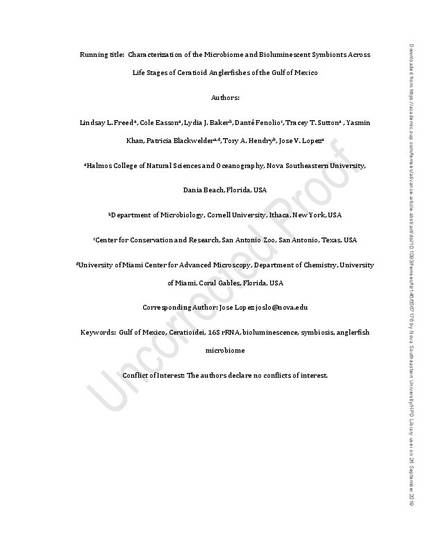
- Gulf of Mexico,
- Ceratioidei,
- 16S rRNA,
- Bioluminescence,
- Symbiosis,
- Anglerfish,
- Microbiome
The interdependence of diverse organisms through symbiosis reaches even the deepest parts of the oceans. As part of the DEEPEND project (deependconsortium.org) research on deep Gulf of Mexico biodiversity, we profiled the bacterial communities (‘microbiomes’) and luminous symbionts of 36 specimens of adult and larval deep-sea anglerfishes of the suborder Ceratioidei using 16S rDNA. Transmission Electron Microscopy was used to characterize the location of symbionts in adult light organs (esca). Whole larval microbiomes, and adult skin and gut microbiomes, were dominated by bacteria in the genera Moritella and Pseudoalteromonas genera. 16S rDNA sequencing results from adult fishes corroborate the previously published identity of ceratioid bioluminescent symbionts and support findings that these symbionts do not consistently exhibit host specificity at the host family level. Bioluminescent symbiont amplicon sequence variants (ASVs) were absent from larval ceratioid samples, but were found at all depths in the seawater, with a highest abundance found at mesopelagic depths. As adults spend the majority of their lives in the meso and bathypelagic, the trend in symbiont abundance is consistent with their life history. These findings support the hypothesis that bioluminescent symbionts are not present throughout host development, and that ceratioids acquire their bioluminescent symbionts from the environment.
Available at: http://works.bepress.com/jose-lopez/250/
